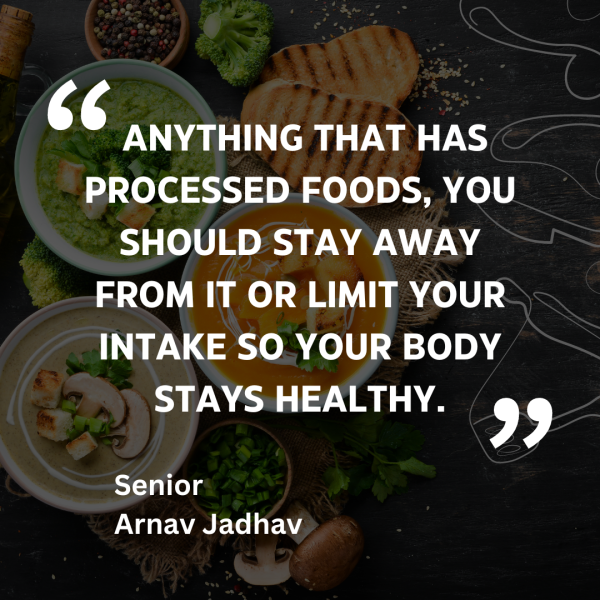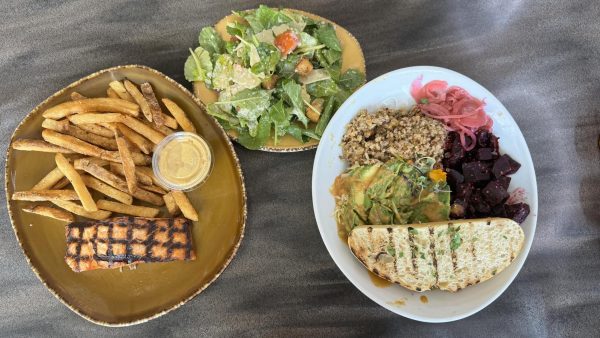Quantity vs. quality — a debate of whether the portion of the food or the healthiness of it matters more. However, U.S. History teacher Robbie Hoffman says it may not be so simple, highlighting that it’s more of a spectrum than a black-and-white answer, with multiple factors contributing to people’s preferred balances between quantity and quality.
Hoffman takes his son to his favorite restaurant Red Robin to indulge in its bottomless macaroni and cheese, served with an orange and french fries. Though Hoffman believes the macaroni and cheese at Red Robin is no different than Kraft Mac & Cheese, he says his son values the never-ending aspect of the dining experience, as he cares more about the quantity of food rather than its nutritional value.
“He doesn’t have as much experience with food because he’s limited to what he’s able to eat, so for him something like mac and cheese is really cool,” Hoffman said. “I think the age of the individual and their exposure to food has an impact on what their preference would probably be.”
Senior Jayden Lim shares a similar balance between the quantity and quality of his food, specifically mentioning Olive Garden and how it might not serve food of the best quality, but the meals are still enjoyable due to the unlimited breadsticks, salads and pasta. However, as he has aged, he comments that while he still appreciates the large quantity of food he gets at Olive Garden, his balance has now shifted more towards the quality of his food.
Like Lim, senior Arnav Jadhav also focuses on the nutrients and calories he gets in his meals and takes extra note of them as a professional powerlifter. In an effort to limit his consumption of sugars, saturated fats and processed foods, Jadhav makes sure that the meals he eats are made from organic ingredients and consist of carbohydrates, proteins and fiber.
“I have a saying, ‘If it’s a white stay away from it,’ because that leads to bloating and excessive water retention, which makes you look chubbier or bigger,” Jadhav said. “Anything that has processed foods, you should stay away from it or limit your intake so your body stays healthy. I try to eat around 145 grams of protein every day and carbs to give me energy throughout the day.”

While Lim agrees with Jadhav about the importance of maintaining a healthy diet, he adds that high quality foods may not be available at all times. When Lim is hungry at a swim meet, he finds that the most easily accessible foods are oftentimes low in quality, like chips and bars sold at the vending machines. So, he says he has to eat more of it in order to get the same amount of nutrients he needs to keep himself energized.
“There come days where there is some sacrifice and I’m so hungry because I’ve been exercising,” Lim said. “I don’t have access to high-quality food, so I just have to increase the quantity of my food and eat some more considerably unhealthier things just to be able to ensure that my body is satiated and not growling all the time.”
Similarly to Lim and Jadhav, Hoffman also cares more about the quality of his food but does not shy away from unhealthy foods, simply eating less if his meal is low in quality and nutrition. Comparing his own preferences to Lim, Jadhav and his son’s, Hoffman points out financial, economic and age factors that have contributed to his preferred balance between quantity and quality. He notes that when he chooses to go to a restaurant with his kids, he has to think about the types of food it offers and their prices, especially since his kids are picky eaters.
“My high school buddies and I would go to McDonald’s to get the special 59 cent hamburgers which were cheap and affordable for people and nowadays you go to a fast food restaurant and you’re spending 15 dollars per person,” Hoffman said. “That’s why we go to Red Robin, because I know my sons are going to eat the food and it doesn’t go to waste. Sometimes you’ll go out on a limb and take your kids to a new, expensive restaurant which will financially burn your money. I think that how often people go out to eat and what they are consuming definitely plays into a financial aspect.”
On top of economic and age factors, Hoffman adds that there are various other aspects, such as culture, that influence someone’s preferred balance of quantity and quality for food. Nevertheless, regardless of one’s preference, Jadhav believes that it should not affect their daily intake of nutrients and calories necessary to maintain a healthy body. He explains that neither a large-portioned but non-nutritive meal nor a nutritious but low caloric meal is a healthy long-term diet.
“Eating is very important because if you don’t eat the proper amount of stuff, you’re going to feel very tired,” Jadhav said. “I feel like as an athlete, you need time to let your muscles recover and your muscles can’t really recover if there’s no protein or fat or anything at all. Staying healthy shouldn’t be something you have to feel forced to. You can have a salad but you can also have a pizza too. Some days, you can eat more fat or more sugar than protein. You just have to eat the right amount of calories.”













